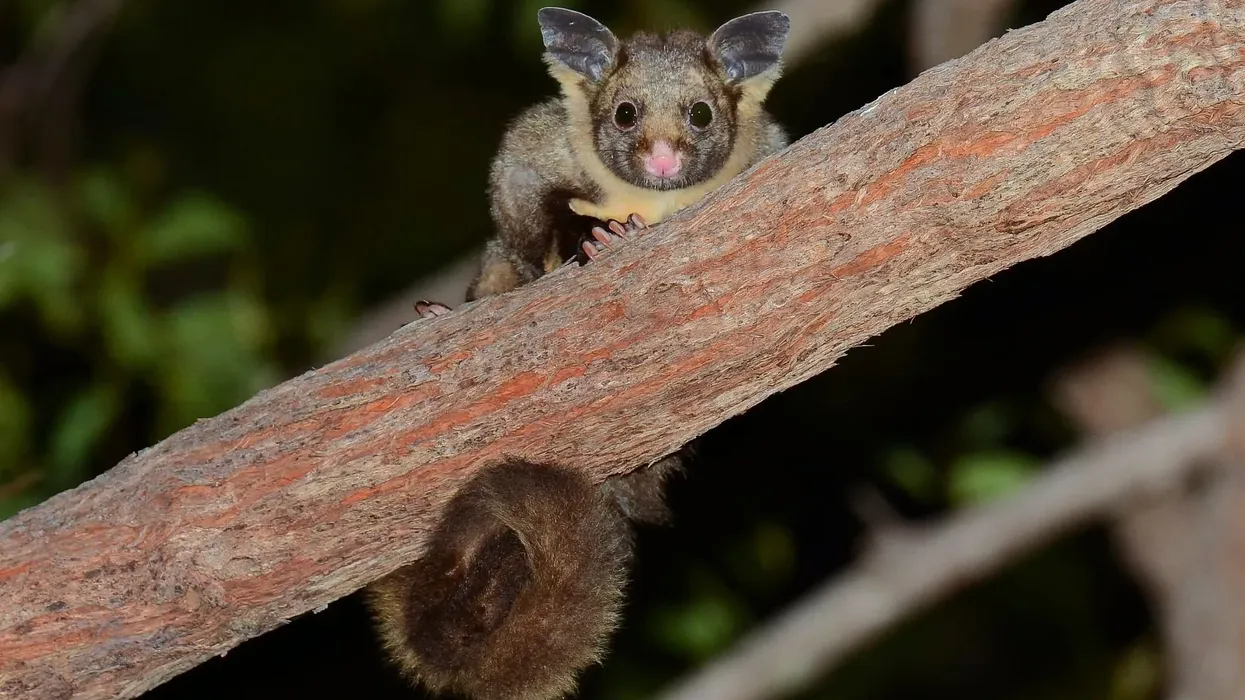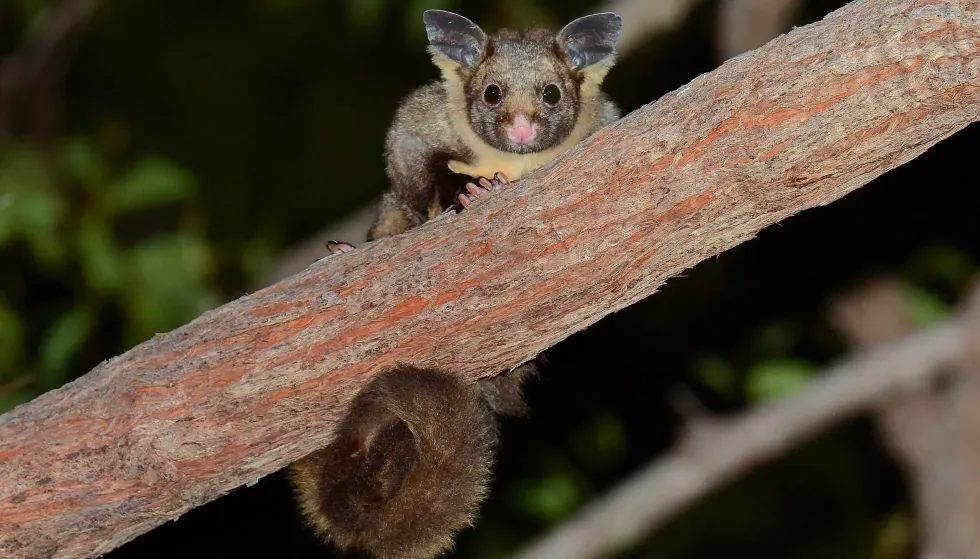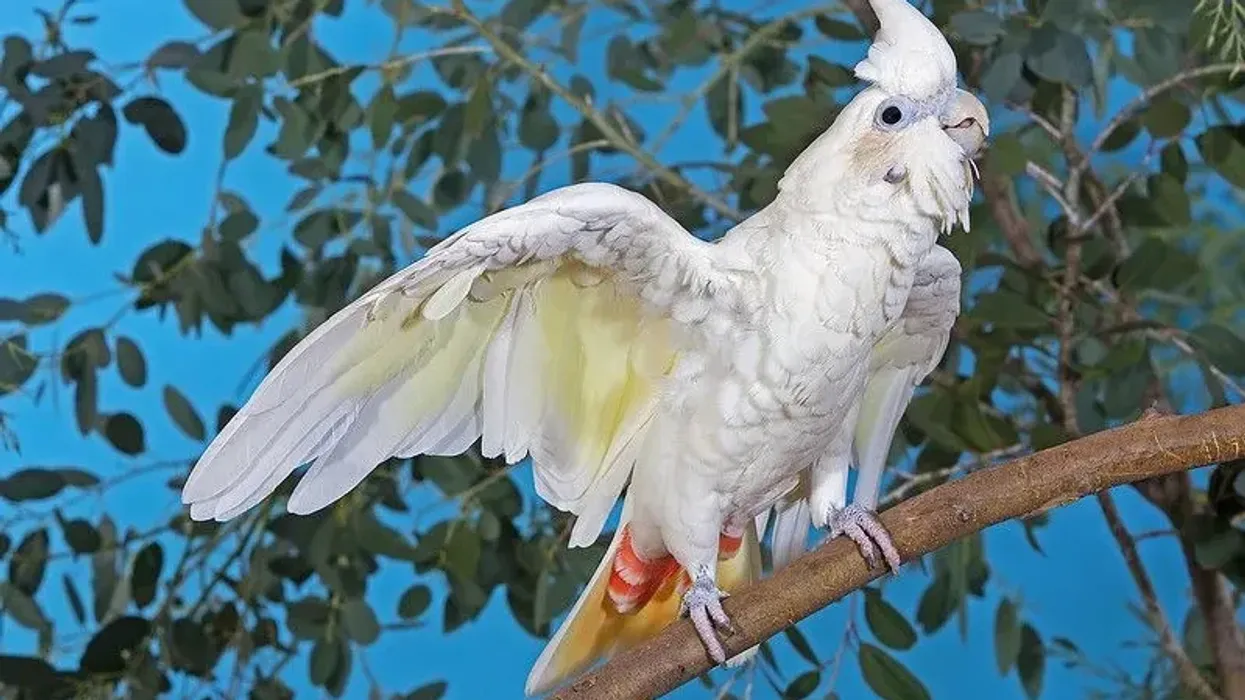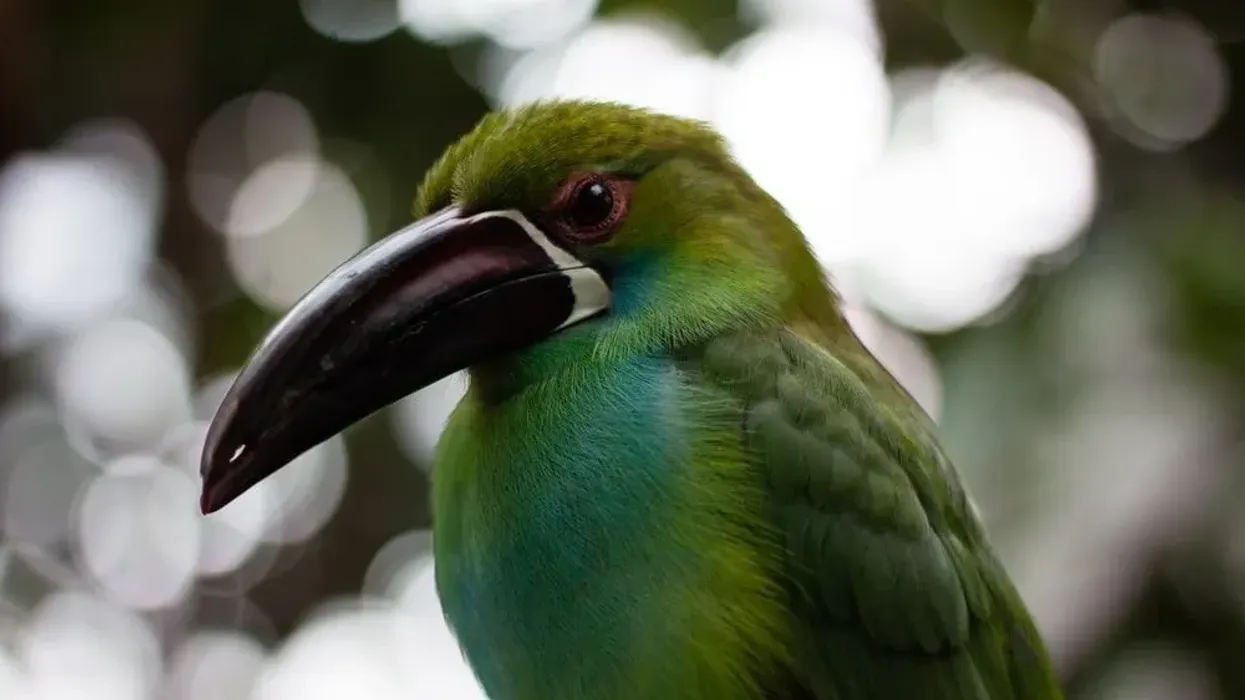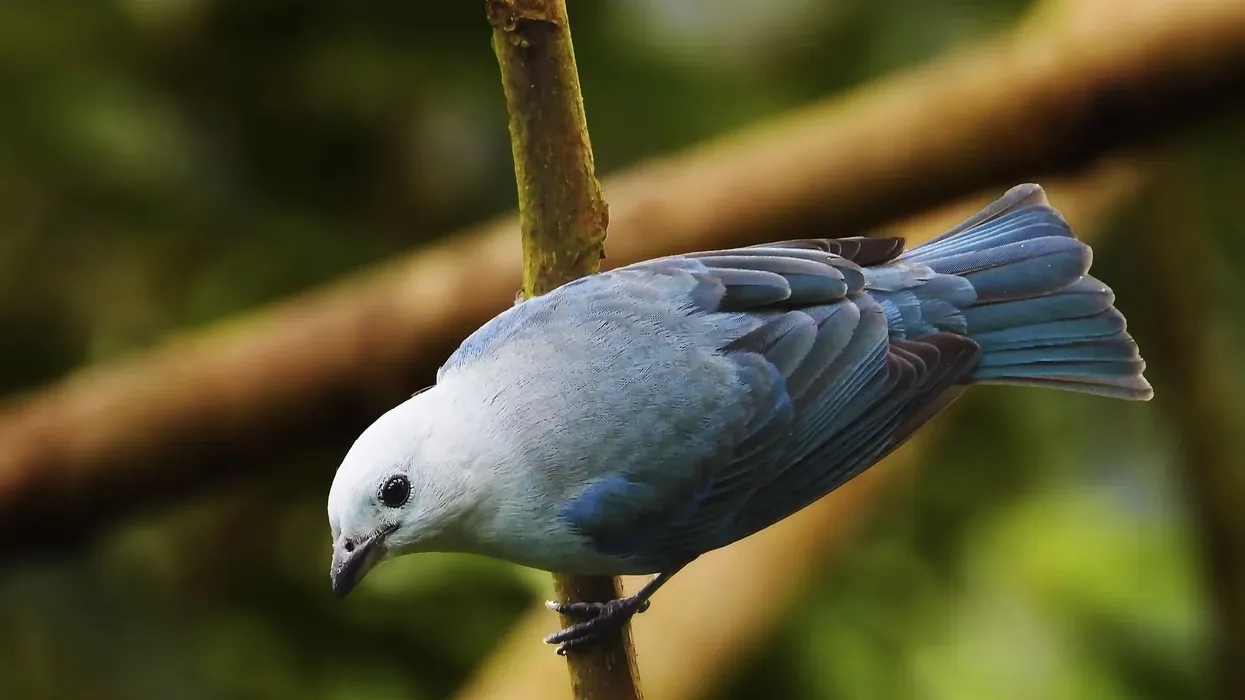If you plan to camp in the eucalypt forests on Mount Windsor Tableland in North Queensland, Australia, then be sure to prepare yourself to hear sudden loud shrieks in the middle of the night to startle you from your sleep.
This is the call of a yellow-bellied glider, a nocturnal marsupial that has unnerved many a camper before. For those who listen to this gurgling sound for the first time, it may feel like some creature is being tortured in the wild.
But no, nothing of the sort happens with this glider, but the noise it makes is a natural call, a way of communication.
The largest of the marsupial gliders, a yellow-bellied glider(Petaurus australis), is also known as a fluffy glider because of its bushy tail. The animal looks beautiful with its contrasting dark back and yellow belly, and pink mouth.
Learn more about squirrel monkeys and sugar gliders after you read this article.
Yellow-Bellied Glider Interesting Facts
What type of animal is a yellow-bellied glider?
The yellow-bellied glider (Petaurus australis) is a nocturnal, arboreal, gliding marsupial. A very gregarious animal that prefers to live in family groups in the eucalypt forests.
What class of animal does a yellow-bellied glider belong to?
The yellow-bellied glider(Petaurus australis) belongs to the Mammalia class. This is the largest species of the Petaurus genus. A native of Australia, there are two subspecies in this genus, one is Petaurus australis, and the other one is Petaurus australis reginae.
How many yellow-bellied gliders are there in the world?
The exact number of yellow-bellied gliders found in the world is not available. However, an estimate put the figure at 6000 individual gliders in their habitat.
According to some studies, there has been a reduction of more than 30% of their populations in the past century because of habitat loss due to various human activities. Since these marsupials live in eucalypt forests in southern and northern Queensland regions, the decline of these forests is a cause of concern for their populations.
Where does a yellow-bellied glider live?
Yellow-bellied gliders are native to the eucalyptus forests of eastern regions and the north Queensland regions and in south Victoria regions of Australia. The species prefer woodland and forests at 1400m above sea level in eastern Australia and 2296.6 ft (700 m) above sea level in the foothill forest of the North Queensland area.
Their habitat is distributed in three different places, Mount Windsor Tableland, Mount Carbine Tableland, and from Atherton to Kirrama on the Atherton Tableland.
What is a yellow-bellied glider's habitat?
The yellow-bellied gliders are found in eucalyptus forests. It lives in the temperate forests and woodlands as well as the tropical savanna regions in Australia.
The populations of this glider are found in the habitat at altitudes with lower temperatures. They inhabit the live hollow-bearing trees in the eucalyptus forests and have a specific niche for tall and matured eucalyptus trees.
Who do yellow-bellied gliders live with?
Yellow-bellied gliders live in small family groups in their den trees found in their habitat regions. The tree hole is lined with leaves. The species is territorial and does not allow any intruder in their home range.
How long does a yellow-bellied glider live?
The lifespan of a yellow-bellied glider is between 6-10 years. The species are losing their habitat because of human activities. Also, the species is very picky about the trees on which they live in their home ranges. And also, they do not eat sap from all the trees in their habitat.
How do they reproduce?
Yellow-bellied gliders reproduce by the sexual reproduction process. The species reaches its sexual maturity around two years of age. These gliding possums are monogamous.
The breeding season begins in August. The young are born very tiny and stay in the marsupium for two and a half months.
In North Queensland, the dens are leaf-lined made in the tree hollows of Eucalyptus Grandis. The young ones stay in the den for two to three months until they wean off from their mother, after which they are on their own.
The species live in small family groups, and sometimes polygamous groups are also found where one male mates with more than one female.
What is their conservation status?
According to the IUCN Red List, the conservation status of yellow-bellied gliders (Petaurus australis) is Near Threatened. The decline in their populations is due to decreased hollow-bearing feed trees in their habitat range of eucalypt forests.
Yellow-Bellied Glider Fun Facts
What do yellow-bellied gliders look like?

*We've been unable to source an image of a Yellow-Bellied Glider and have used an image of its habitat. If you are able to provide us with a royalty-free image of a Yellow-Bellied Glider, we would be happy to credit you. Please contact us at hello@kidadl.com.
This species of marsupial gets its name because of its orange-yellow belly. The paler belly looks contrasting when the animal glides in the air. The back is dark grey-brown. There is a dark black stripe on the thigh. The dark tail is lengthy and bushy. They have this lovely pink nose with semi-naked ears.
How cute are they?
The yellow-bellied glider (Petaurus australis) is a cute little marsupial. They are small built with a contrasting dark back, and a lighter belly with a bushy tail is a catch in itself. Many a time, they are also known as fluffy gliders because of their lengthy tail.
How do they communicate?
The yellow-bellied glider is the loudest of the six gliding marsupials found in Australia. One can hear the call from 1640.4 ft (500 m) away.
The vocal cues, which startle anyone in the surroundings in the eucalypt forests of Australia, are not distress calls but are just a way of communication among each other. Loud shrieks or whirring moans, gurgles or chirps, are noises with which these nocturnal species communicate with their mates.
How big is a yellow-bellied glider?
The yellow-bellied glider has a long bushy tail which is longer than its body length. The body is 11.8 in (30 cm) in length, whereas the tail length is 18.9 in (48 cm). Thus, an adult yellow-bellied glider grows to about the same size as a rabbit.
How fast can a yellow-bellied glider move?
There is no particular information on the speed at which these marsupials glide. But they glide or jump for as far as 328.08-374.02 ft (100-114 m)! A gliding membrane connected from its wrists and ankles helps in the process of gliding.
How much does a yellow-bellied glider weigh?
Ann adult yellow-bellied glider grows to weigh about 24.69 oz (700 g). Their lightweight and bushy tail helps them to glide or jump from tree to tree for about 328.08 ft (100 m).
What are the male and female names of the species?
Yellow-bellied glider (Petaurus australis) males and females do not have any particular names based on their sex.
What would you call a baby yellow-bellied glider?
A baby yellow-bellied glider is known as a joey. Like most marsupials, only one joey is born out of a litter.
What do they eat?
The yellow-bellied glider feeds on the tree sap, nectar, honeydew, and pollen. Also, they relish insects on trees like large crickets.
This species is famous for licking the tree sap by making a V-shaped cut into the bark of the tree with its lower teeth. They are particular about the trees found in their habitat, and only Eucalyptus sap, Corymbia sap, Angophora sap, and Lophostemon sap are chosen.
They also feed on insects and grubs and sometimes on very small invertebrates. So precisely, we can say that a yellow-bellied glider is not a herbivore or a carnivore but an omnivore.
Are they poisonous?
No, they are not poisonous.
Would they make a good pet?
They are not appropriate as pets as they are wild animals.
Did you know...
The scientific name of this species is Petaurus australis, which also means 'southern rope dancer'.
Their favorite is eucalyptus tree sap among all the trees in a eucalyptus forest in Australia. To extract the sap, it chews the bark to form a V-shaped channel until the cambium of the tree gets exposed. The sap runs down and gets collected at the base for the glider to lick it readily.
Do they bite?
Not much information is available on the biting habit of a yellow-bellied glider, but the sugar glider, which is a famous exotic pet known as a pocket pet, has this habit of biting when handled against its interest and for other reasons as well. This habit must be, however, discouraged if one has it as a pet.
Are they friendly?
The yellow-bellied glider is a very gregarious animal and lives in small groups, also known as colonies. They are very friendly with each other but can be territorial towards any unwanted intruders.
Here at Kidadl, we have carefully created lots of interesting family-friendly animal facts for everyone to discover! Learn more about some other mammals from our feathertail glider facts and European rabbit facts pages.
You can even occupy yourself at home by coloring in one of our free printable yellow-bellied glider coloring pages.

